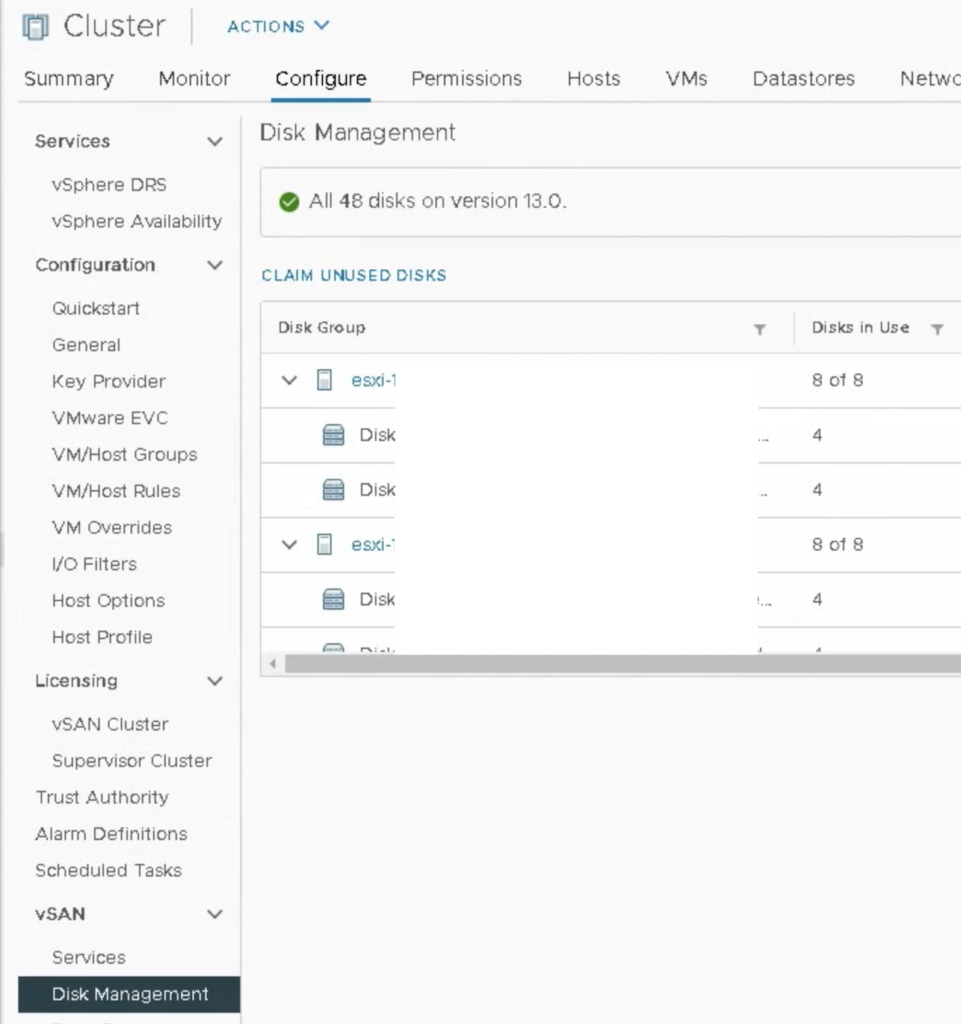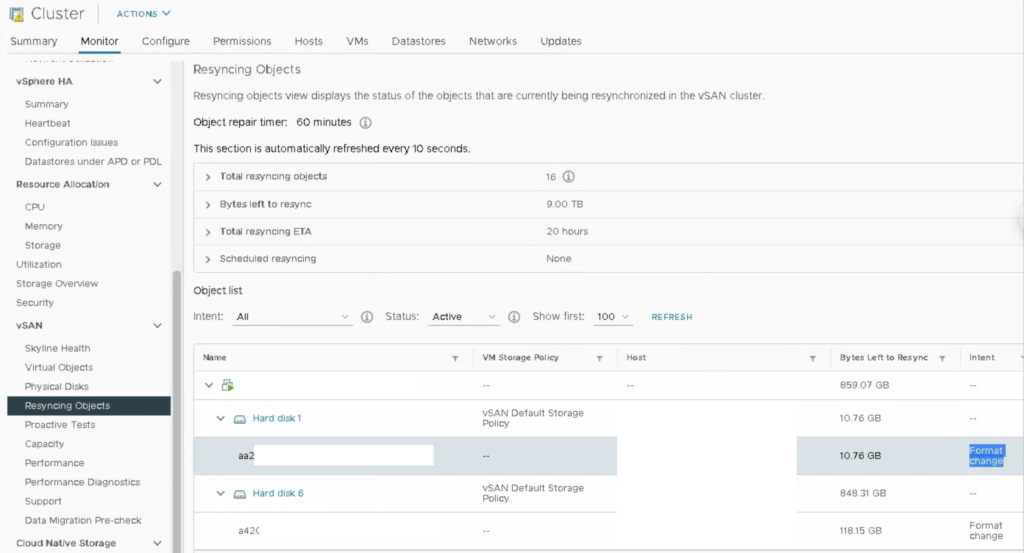When you upgrade your cluster to 7.0 U1 you get a new disk format version 13.0. And like always, if it is an upgrade from recent vSAN versions like 6.7, no data evacuation is required, it is metadata change only.

I was sure my update will be quick as previous ones but not this time ;-). I was surprised by a new activity in the Resyncing Objects dashboard called “Format change”.

It turns out that for 7.0 U1 objects that are greater than 255GB have to be rewritten to a new format. My cluster had many of such objects (like VMs with VMDKs of 1 TB ) so it took some time to change their format.
There is also a new Skyline Health test that shows how many objects need a new format:

Why the format change is needed? It is a kind of internal optimisation to allow vSAN to change policies or rebuild with less than 25-30% free space required. So slack space can be smaller from now on which leaves more capacity for workloads.
